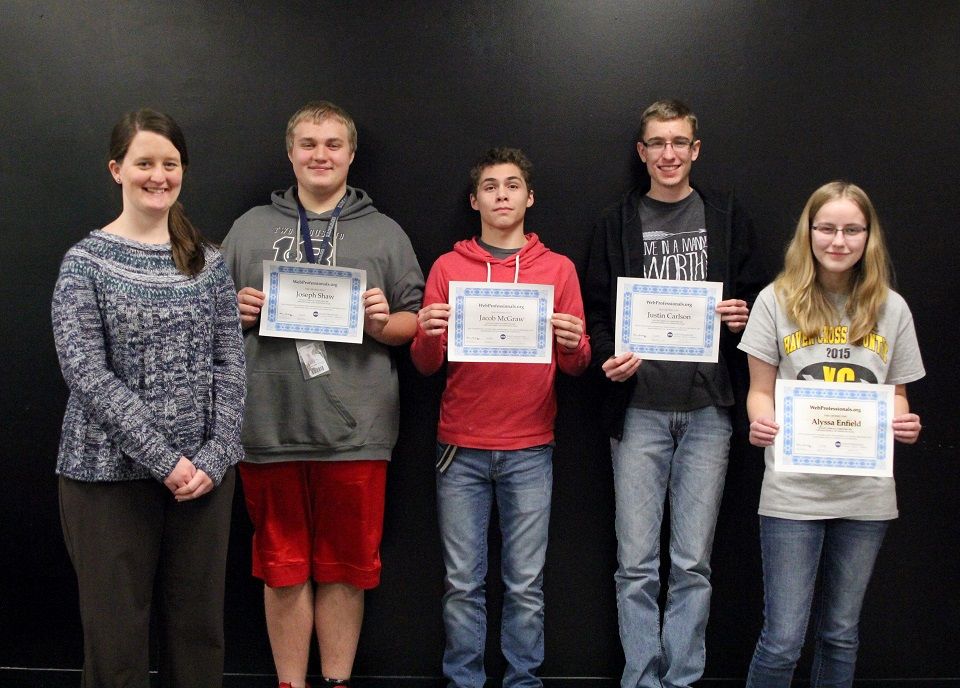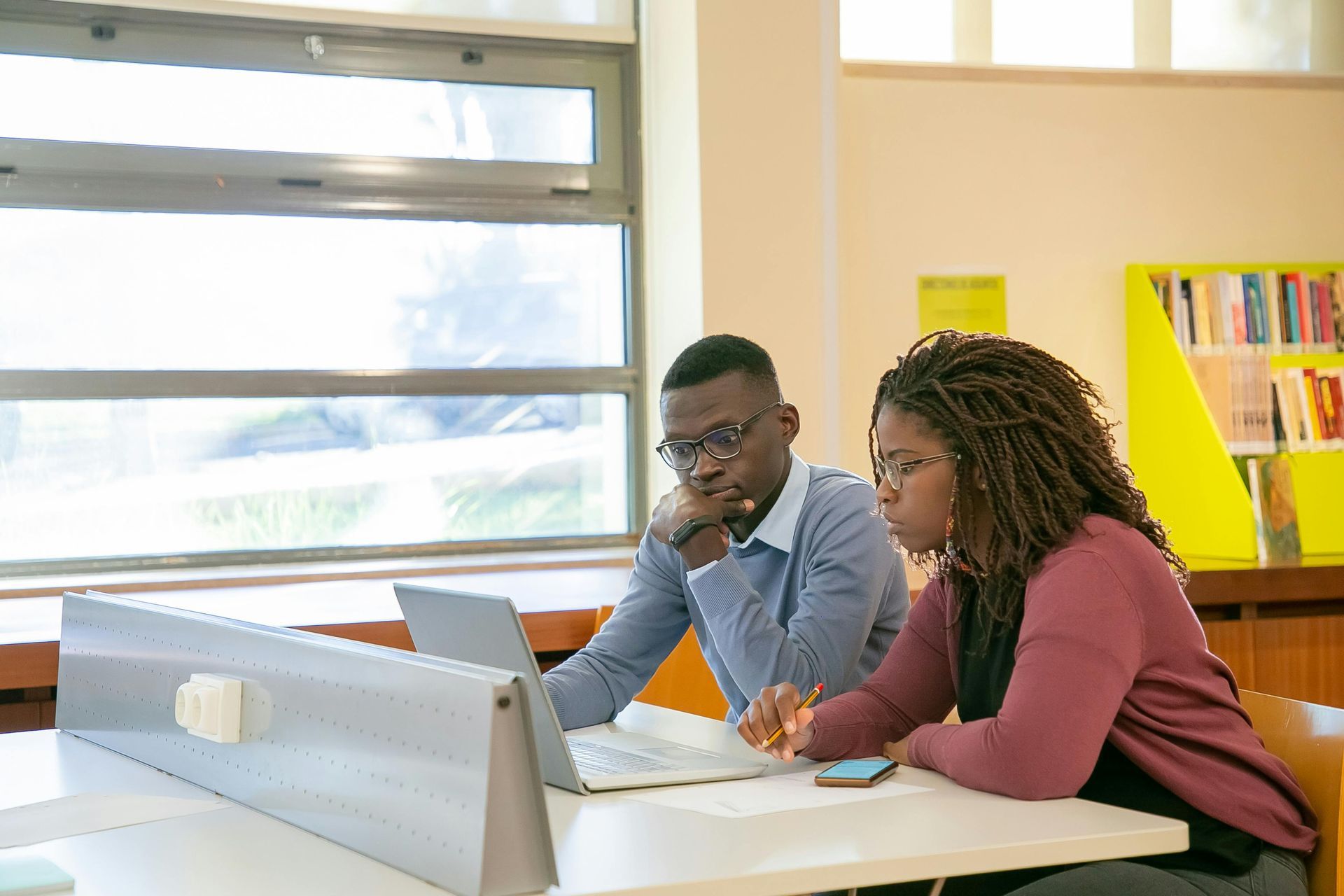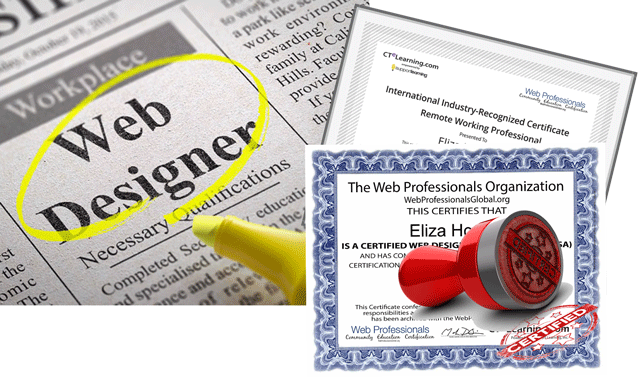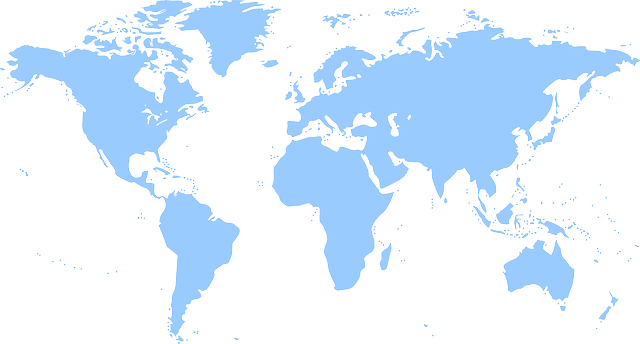Blog
Workforce Development: How One Mom Benefited From Web Design Curriculum and Certifications
What do you do when you want to retool for a new career? As an adult, you have more responsibilities and time pressures. Add to that the chance that at any moment you can get a call from school saying that your kids will be learning from home for the week or month or more, and it can be difficult to manage being a working professional.
Today we are highlighting one of our success stories here at CTeLearning. Eliza H. is a mother of school-age children who had to transition to working remotely because her children were home more due to frequent COVID-19 school closings. Over the years she has taken courses at her local community college to keep her skills sharp and continue to develop her career, and she recently worked with CTeLearning and the Web Professionals Organization to continue that development.
Eliza earned her Web Design and Remote Working Professional certifications, all from the comfort of her own home. She recently used those credentials to land a remote job as a web community developer and is now working on meaningful projects in the job of her dreams. In her interviews for the job, she was able to talk about the industry certifications she earned. She started on a Monday, knocked out four separate interviews all within a week and she was offered the job that Friday.
As a mom with two young children, these courses and certifications gave her the skills and knowledge to enter the tech field while maintaining her status as an involved mother. She still picks her children up from school, helps them with homework, and stays with them when they are home sick.
Eliza is very thankful to her local community college that set her up with this opportunity and gave her the chance to become certified web designer through the web design curriculum. With all the chatter today about the high cost of college, she shows how quickly you can upskill. No high-dollar boot camp. No expensive four-year school with big loans. And these certifications are built and backed by industry, not professional testing companies. Instead of having to take a high-stakes exam at the end of the courses, she completed project work through the courses to build her career-ready portfolio. Her training paid off when she realized on day one of the job that she already had the skills to succeed.
A New Model for Web Design Curriculum
This opportunity is part of a special partnership between CTeLearning and the Web Professionals Organization, which allowed CTeLearning to build all certification aspects into the interactive curricula. As students progress through the curriculum, they complete requirements and build up to earning the certification—it’s like completing a puzzle. Every project, quiz, and activity either links to a national CTE standard, certification domain, or both. The curriculum is project-based learning using real-world projects to complete the requirements to receive an international industry-recognized certification. One of the exciting moments for Eliza was when she found out that she was part of this new pilot program for the new industry-relevant model for certification attainment.
Right before she landed her job, we caught up with Eliza to learn more about her journey and dedication to professional development in the age of remote work.
What attracted you to the web design curriculum?
Web design allows me to combine my passions; being creative and helping people. I love being able to be creative and bring people’s ideas to light while helping people expand their business to reach the whole globe, if that is what they are after. I am currently focusing on the coding or backend side of websites so I will be able to provide customized website designs to each client.
How has taking the Remote Working Professional course and earning the certification empowered you as a web design professional?
The Remote Working Professional course provided guidance on how to set up your day to day operations while working from home. Now that many jobs have moved to being remote, we now need to learn how to make home the new workplace and also be able to separate work from home. I have worked from home in the past doing tech support and this course has given me a certification that backs my knowledge on how to work remotely and be successful.
How has the course and certification changed your view of global connectivity and people being able to learn and work remotely from anywhere?
I think we are digitally connected more than ever. The certification, Remote Working Professional International Industry Recognized Certification (IIRC), shows everyone you have the skills to work from your home office and excel in your role.
How has your experience at the community college shown you how important it is to continue to develop your skills as a professional?
I previously worked in an office and took classes at my local community college that taught me the skills I needed to be good at my job. Now that I have my Web Design certification, I am taking even more courses. The information that I am learning is up-to-date and valuable in the job market.
What did you enjoy about your experience at the community college?
Community colleges offer fantastic value. It was an easy choice for me to first look at Washtenaw Community College to retool and get ready for the new reality of work. It wasn’t just the convenience—Washtenaw is part of our local economy, understands our community, has great teachers and is affordable. I really do love Washtenaw. I started taking classes back in 2006 when I was transitioning from one college to another. I wasn’t sure what I wanted to do so I took some general education classes that would transfer. I loved the small class sizes and the teachers were excellent. I have gone back several times to take classes and I have never had a bad experience.
What skills did you learn in the course about working remotely that you would share with a hiring manager in a job interview?
I would tell them about my home office that is secluded from the rest of the house which ensures I have limited distractions during the day and how I can work more throughout the day because I don’t have a commute.
What does the term future-proof mean to you now?
Being able to have a career/business that I can work on my own time, and having a career/business that is in high demand.
What have you learned about how to balance being a mom with school-aged kids with being a working professional in the remote economy?
I love working remotely because I have time to get tasks for work and home done. I can take a quick break and go change laundry loads or take the dogs out for a walk. I can pick up my kids from school if I need to. Being able to get the home tasks completed, makes me able to focus on work more. I end up getting more done than if I had to commute.
What have you learned that you would pass on to your kids to help them excel in the classroom as well as in their future professional lives?
How important it is to make a schedule and to follow it. Set times to focus on work and times to focus on breaks. Great time management can make you stand out.
What would you tell other parents who are considering career changes?
Don’t be afraid! You have to come up with a plan of attack to get where you want to go and then follow it. Don’t let doubt get to you. Find something that you are passionate about, that way work becomes more like play. Get paid to do what you love.
Steve Waddell, founder and lead developer of CTeLearning, said, “I won’t pretend that the process was easy. Our saving grace was that we had all the CTE standards already built in and aligned, so it came down to getting creative in how we challenged the learner to express the requirements and domains of the certification. But this turned into the fun part. When I look at the web design curriculum as well as our other curriculum, I can see all the domains present and how they align to the industry expectations. The Web Professionals Organization was great to work with on this. There had to be quite a bit of trust as we were taking their IP and weaving it into our curricular work. Everyone who worked on this was passionate about protecting their information. As someone who hires and fires designers and developers, I have made some poor hiring choices based on some sub-par certificates. I love this new industry-relevant model. Eliza graduated using this model and is excelling in the real world. I just see this as the next step forward. We have destroyed the teaching to the test model.”
Mark Dubois, Executive Director of the Web Professionals Organization, said, “We’ve been working on reimagining industry certifications for over a year. The conversation started among our executive team. Eliza is one of the first as part of the pilot program we are testing. We are seeing that we really have the curriculum and certifications aligned in such a way that we can use the body of work as the instrument to determine credential attainment versus the traditional standardized exam. So far, I can say that this works very well. We are committed to maintaining our industry standards while modeling how industry actually works.”
Reach Out to Us Today
Just like Eliza, you can balance your professional life with being a parent. Check out our course page to see our Web Design curriculum, and reach out to us today to discover how our certifications and curriculum can help you take the next step in your career. You can reach the creators of the curriculum directly at 913-764-4272 or swaddell@ctelearning.com.
Share To
Get in touch with us today!
You can book a demo directly using Calendly, call us directly at 913-764-4272 or 877-828-1216, or submit the form and we will reach out to you.
We look forward to helping you and your students.

Most Recent Posts






